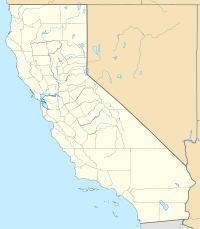Progression
The Lions Fire was reported around noon on June 11, 2018. Started by a lightning strike, it was spotted near Lion Point in the Ansel Adams Wilderness in the Sierra National Forest. On June 22, the fire crossed into Inyo National Forest. The next day, the fire had spread due to heavy winds, growing to over 1,000 acres (4 km2) and moving closer to Mammoth Lakes at approximately seven miles southwest. The Lions Fire has been burning in high elevations, approximately 6,000 to 8,000 feet in elevation, thriving on red fir. [2]
Strong winds overnight expanded the fire to 2,383 acres (10 km2). A temporary flight restriction was put in place over a five-mile radius on June 25. [1] By the next day, the fire had burned into the Stairway Creek, northwest of the middle fork of the San Joaquin River. It also reached the Butte Fire (2017) footprint, which slowed the Lions Fire's westward movement. [3] The Lions Fires expanded to over 3,000 acres (12 km2) by the morning of June 28. [4] As of June 30, the fire had slowed its progression and was seven percent contained and had burned 3,300 acres (13 km2). [1]
July 1 marked the fourth day of burn-out operations on the Lions Fire. [1] By July 5, the fire had grown to 4,000 acres (16 km2) and was 60 percent contained, due to lack of fire growth and crews reinforcing firelines, to mitigate concerns about dryer weather and high winds. Air quality remained poor in Mammoth Lakes and the surrounding areas. [5]
By late August, the growth of the Lions Fire slowed, with containment gradually increasing. On October 1, 2018, InciWeb declared the Lions Fire to be inactive, as no more hotspots were detected within the fire perimeter. By then, the fire had burned at total of 13,347 acres (54.01 km2). [1]
This page is based on this
Wikipedia article Text is available under the
CC BY-SA 4.0 license; additional terms may apply.
Images, videos and audio are available under their respective licenses.


